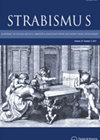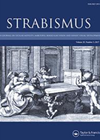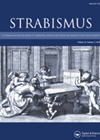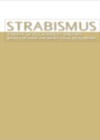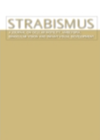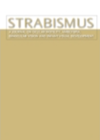
Journal Reviews
Conj reconstruction with amniotic membrane
This study reports the use of amniotic membrane in patients with restrictive strabismus or conjunctiva problems during or following complex eye muscle surgery. Ambio 5 was used for replacement of conjunctiva in this retrospective study of 32 cases aged one...
Angle of deviation measurements in seated and supine positions
The objectives of this study were to compare ocular deviation between the seated and decubitus positions in the operating room and assess the outcomes at one day, one month and three months postoperatively. This prospective study included 30 cases; two...
Binocular summation responses in strabismic amblyopia
A preliminary study was conducted to determine whether binocular summation (BS) in strabismic amblyopia is more decreased than in strabismus alone and whether strabismus surgery improves BS. The study included 15 strabismic amblyopes, 30 normal controls and 30 strabismic controls....
Vertical angle surgical outcomes
The surgical results of all patients undergoing isolated adjustable suture vertical squint surgery for thyroid eye disease are presented for a single centre over five years to explore the predictive factors for surgical planning. This was a retrospective study in...
Surgical oculocardiac reflex
The authors evaluated the incidence of oculocardiac reflex (OCR) during strabismus surgery to determine its associated risk factors at a tertiary referral centre. Seventy-six patients were reviewed; 51.3% male and a mean age of 15±12 years. Strabismus surgery was bilateral...
Surgical effect of limited membrane dissection
Strabismus surgery was performed with minimal dissection of Tenons sheath and minimal tissue manipulation compared to conventional methods for patients with pure horizontal strabismus – to evaluate the effect on surgical outcomes. The study included 54 patients; 52% female. Mean...
Factors indicating better stereopsis for APAET
The purpose of this study was to determine preoperative factors that affect postoperative stereopsis in patients with acquired partially accommodative esotropia (APAET). This retrospective study was undertaken over a five-year period. Eighty-four subjects had surgery for APAET and 57 met...
MISS vs. fornix approach
The objectives of this study were to compare minimally invasive strabismus surgery (MISS) with the fornix approach in paediatric horizontal strabismus surgery (<12 years) and to evaluate early postoperative inflammation, visual acuity and operating time after a four-year training period...
Supranuclear palsy
This paper reports the results of surgery for supranuclear monocular elevation deficiency. Contralateral superior rectus maximal recession was undertaken without interfering with the superior oblique tendon position, transection of the superior oblique to the superior rectus frenulum and directly suturing...
Refractive changes after surgery
A long-term follow-up study was conducted to report power vector analysis of refractive astigmatic changes in a large group of 137 patients (250 eyes) undergoing horizontal strabismus surgery. Fifty-four percent were male. The average age was 9.22±8.21 years. Fifty-five percent...
Persian AS20 validation
The authors developed a Persian version of the AS20 questionnaire and used the new version to evaluate the effect of strabismus surgery on health-related quality of life. Two independent bilingual translators translated the English version AS20 into Persian. The two...
Muscle insertion measurement by ultrasound biomicroscopy
The aim of this study was to evaluate the accuracy of ultrasound biomicroscopy (UBM) preoperatively and postoperatively in patients having primary horizontal muscle surgery. Sixteen eyes of 15 patients with concomitant horizontal strabismus were evaluated; mean age 21.1 ±3.3 years,...

